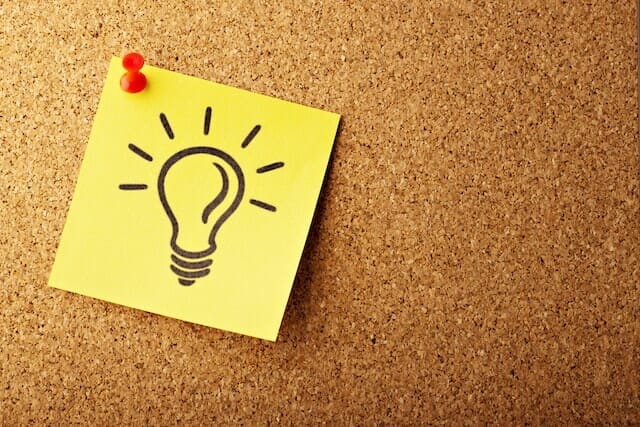The Importance of Self-Regulation
Scientific findings over the past decades have demonstrated that self-regulation plays a very significant role in many different areas of people’s lives, such as job searching, performance improvement, leadership, and rapid acquisition of new knowledge and skills (Zimmerman & Schunk, 2011).
Specifically, self-regulation is the cornerstone for individuals in personal development, well-being, successful adaptation to rapidly changing environments, and the achievement of personal and professional goals (Scholer et al., 2018).
However, the contribution of self-regulation does not stop there. It also extends to an individual’s ability to manage their emotions, achieve autonomy, satisfy their needs, and successfully coexist within society (Ryan & Deci, 2000).

What is Self-Regulation?
Self-regulation is a complex process that occurs on both conscious and unconscious levels, through which an individual exercises control over the internal processes that take place while working toward the achievement of specific goals (Vohs & Baumeister, 2004).
In other words, it can also be described as the ability of an individual to maintain control over their thoughts, actions, and behaviors in order to achieve their goals.
Various models have been proposed to illustrate the process of self-regulation. The model most widely used and ultimately prevailing is that of Zimmerman (2009).
This model describes the cycle of self-regulation as occurring in three phases: Forethought, Performance, and Self-Reflection.
In the first phase, the forethought phase, the individual sets the desired goal, develops the appropriate action plan, and analyzes the specific actions and steps required to achieve the goal.
The success of the first phase is heavily influenced by the individual’s level of motivation, the development of the necessary self-efficacy, the selection of a goal that holds significant value for them, and finally, the assessment of the benefits that achieving the goal will bring.
In the second phase, the performance phase, once action toward the goal has begun, the individual proceeds to monitor and evaluate the actions and strategies they have chosen to implement. This helps them stay focused and adapt as needed to stay on the correct path toward achieving the goal (Zimmerman & Moylan, 2009).

In this phase, the skills of self-observation and self-control are extremely valuable. The individual needs to be able to manage their time effectively, set priorities, seek help from the right people, and establish appropriate boundaries with tasks or individuals that are not related to achieving the goal.
In the third and final phase, self-reflection, and after the process is completed and the goal is achieved, the individual evaluates the results and draws lessons for future actions.
This is accomplished through self-evaluation, where the person assesses whether they achieved the goal, what they did right or wrong, and how satisfied they feel with the process (Zimmerman & Moylan, 2009).
It is important to note that even if the goal is not achieved, the third phase of the cycle remains extremely valuable. This failure serves as a learning opportunity, thereby enriching the individual’s judgment and understanding.
Self-reflective evaluation helps the individual learn, grow, adapt, and be more prepared and effective in the future.
4o

How is Self-Regulation Developed Through Coaching?
Coaching helps clients activate their internal locus of control, recognize their strengths and weaknesses, beliefs, values, and motivations.
A coach assists the coachee (client) in setting goals correctly, staying committed and motivated, selecting appropriate strategies, making necessary adjustments, and ultimately overcoming any obstacles to achieve their goal.
The coaching process closely follows the steps of the self-regulation cycle. The coach accompanies the coachee throughout the process and helps them successfully navigate the entire self-regulation cycle.
Specifically, the coach supports the coachee in the following ways:
- Managing their thoughts, emotions, and behaviors effectively.
- Developing the appropriate skills to successfully navigate all three stages of the self-regulation cycle.
- After the goal is achieved, helping the coachee draw the right conclusions that will enable them to repeat the process in an even better and more efficient way in the future.
Most importantly, the coach teaches the coachee how to “learn from their own experience.” Thus, by the end of the coaching relationship, the coachee has internalized the ability to learn from their experiences and develop autonomously.

Conclusions
The development of the self-regulation cycle begins in childhood and is influenced by biological, cognitive, and social factors (Bridgett et al., 2015; Zimmerman & Kitsantas, 2005). It continues to evolve throughout a person’s life through interactions with friends, teachers, and individuals who help them learn and grow.
Self-regulation is a skill that can be taught, optimized, and developed, making an individual more effective, prepared, and efficient both personally and professionally.
Coaching is one of the best methods for developing the self-regulation cycle, as the methods and techniques it incorporates follow the principles and structure of the self-regulation cycle itself.
References
Bridgett, D., Burt, N., Edwards, E., & Deater-Deckard, K. (2015). Intergenerational transmission of selfregulation: A multidisciplinary review and integrative conceptual framework. Psychological Bulletin, 141(3), 602–654. https://doi.org/10.1037/a0038662
Ryan, R., & Deci, E. (2000). Self-determination theory and the facilitation of intrinsic motivation, social development, and well-being. In American Psychologist, 55(1), 68–78. https://doi.org/10.1037/0003-066X.55.1.68
Scholer, A., Miele, D., Murayama, K., & Fujita, K. (2018). New directions in self-regulation: The role of metamotivational beliefs. Current Directions in Psychological Science, 27(6), 437–442. https://doi.org/10.1177/0963721418790549
Vohs, K., & Baumeister, R. (2004). Understanding self-regulation: An introduction. In R. Baumeister & Vohs (Eds.), Handbook of self-regulation (pp. 1–9). Guilford.
Zimmerman, B., & Kitsantas, A. (2005). The hidden dimension of personal competence: Self-regulated learning and practice. In A. J. Elliot, C. S. Dweck, & S. Carol (Eds.), Handbook of competence and motivation (pp. 509–526). Guilford Publications.
Zimmerman, B., & Moylan, A. (2009). Self-regulation: Where metacognition and motivation intersect. In D. J. Hacker, J. Dunlosky, & A. C. Graesser (Eds.), Handbook of metacognition in education (pp.299–315). Routledge.
Zimmerman, B., & Schunk, D. (2008). Motivation: An essential dimension of self-regulated learning. In D. Schunk & B. Zimmerman (Eds.), Motivation and self-regulated learning (pp. 1–30). LEA.
Zimmerman, B., & Schunk, D. (2011). Self-regulated learning and performance: An introduction and an overview. In B. Zimmerman & D. Schunk (Eds.), Handbook of self-regulation of learning and performance (pp. 1–12). Routledg
